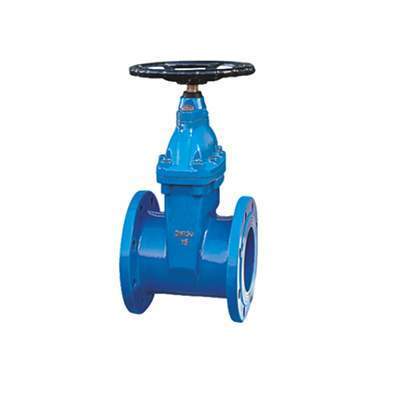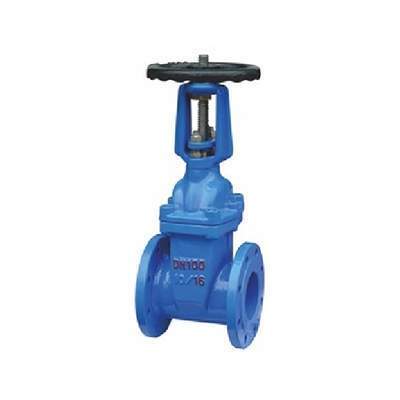Welcome to My Blog!
Before we dive into the content, I’d love for you to join me on my social media platforms where I share more insights, engage with the community, and post updates. Here’s how you can connect with me:
Facebook:https://www.facebook.com/profile.php?id=61563865935136
Now, let’s get started on our journey together. I hope you find the content here insightful, engaging, and valuable.
Introduction

In industrial systems where precise flow control is paramount, selecting the right valve technology can significantly impact efficiency, safety, and longevity. Among the various valve types available, the soft-sealed gate valve stands out for its unique design and reliable performance. This valve, known for its resilient sealing mechanism, is widely used across industries such as water treatment, oil and gas, and chemical processing. Its ability to provide a tight seal and regulate fluid flow makes it an essential component in modern piping systems. This blog explores how a soft-sealed gate valve enhances flow control, diving into its design, benefits, applications, and more, offering a comprehensive guide for engineers, procurement specialists, and industry professionals.
Understanding the Design of a Soft-Sealed Gate Valve
The soft-sealed gate valve is engineered with a flexible sealing material, typically made from elastomers like rubber or EPDM, which ensures a tight seal when the valve is closed. Unlike traditional metal-seated gate valves, the soft seal provides enhanced sealing capabilities, particularly in low-pressure systems. The gate, which moves perpendicular to the flow of the fluid, is coated or embedded with the soft sealing material, allowing it to compress against the valve seat to prevent leaks. This design minimizes wear on the valve components and ensures a longer service life, even in demanding environments. The simplicity of the gate valve’s linear motion also contributes to its ease of operation and maintenance.
Key Components of a Soft-Sealed Gate Valve
A typical soft-sealed gate valve consists of several critical components that work together to ensure effective flow control. The valve body, often made from durable materials like cast iron or stainless steel, houses the gate and sealing mechanism. The gate itself is the primary flow control element, moving up or down to open or close the flow path. The soft sealing material, which is the hallmark of this valve type, is applied to the gate or the seat to create a reliable seal. Additionally, the valve stem and actuator (manual, electric, or pneumatic) allow for precise operation, making the valve suitable for both on-off and throttling applications in specific scenarios.
Advantages of Using a Soft-Sealed Gate Valve for Flow Control
The soft-sealed gate valve offers several advantages that make it a preferred choice for flow control in various industries. One of the most significant benefits is its ability to provide a bubble-tight seal, preventing leaks even in low-pressure systems. This is particularly important in applications where fluid loss or contamination could lead to costly downtime or environmental hazards. Additionally, the soft sealing material reduces friction between the gate and the seat, minimizing wear and extending the valve’s lifespan. The valve’s design also allows for low torque operation, making it easier to actuate manually or with automated systems.
Enhanced Durability and Corrosion Resistance
The materials used in soft-sealed gate valves, such as corrosion-resistant alloys for the body and resilient elastomers for the seal, ensure durability in harsh environments. For instance, in water treatment plants, where valves are exposed to moisture and chemicals, the soft-sealed gate valve resists corrosion and maintains its sealing integrity over time. This durability translates to lower maintenance costs and reduced need for frequent replacements, making it a cost-effective solution for long-term flow control.
Versatility Across Applications
Another key advantage of the soft-sealed gate valve is its versatility. It can handle a wide range of fluids, including water, wastewater, and certain chemicals, making it suitable for diverse industries. Whether it’s controlling the flow of potable water in municipal systems or managing slurries in mining operations, this valve adapts to various operational requirements. Its ability to function effectively in both high- and low-pressure systems further enhances its applicability.
How a Soft-Sealed Gate Valve Improves Flow Control Efficiency
Flow control efficiency is critical in optimizing system performance and reducing energy consumption. The soft-sealed gate valve contributes to this efficiency by offering minimal flow resistance when fully open. Its unobstructed flow path reduces pressure drops, ensuring that fluids move smoothly through the system. When closed, the soft seal ensures no leakage, maintaining system pressure and preventing unnecessary energy loss. This balance of low resistance and reliable sealing makes the valve an ideal choice for applications requiring precise flow regulation.
Comparison of Flow Characteristics
To illustrate the effectiveness of soft-sealed gate valves in flow control, the following table compares their flow characteristics with other common valve types:
| Valve Type | Flow Resistance (Open) | Sealing Capability | Throttling Ability | Typical Applications |
|---|---|---|---|---|
| Soft-Sealed Gate Valve | Low | Excellent (Bubble-tight) | Limited | Water, wastewater, slurries |
| Ball Valve | Very Low | Excellent | Moderate | Oil, gas, chemicals |
| Globe Valve | High | Good | Excellent | Throttling, high-pressure systems |
| Butterfly Valve | Moderate | Good | Moderate | Large pipelines, HVAC |
This table highlights the soft-sealed gate valve’s strengths in providing low flow resistance and excellent sealing, making it a strong contender for applications where on-off control is the primary requirement.
Applications of Soft-Sealed Gate Valves in Industry
Soft-sealed gate valves are employed in a wide range of industries due to their reliable performance and adaptability. In water treatment facilities, they are used to control the flow of potable water, wastewater, and treatment chemicals, ensuring safe and efficient operations. In the oil and gas sector, these valves manage the flow of crude oil, natural gas, and refined products, where their corrosion resistance and tight sealing are critical. Chemical processing plants also rely on soft-sealed gate valves to handle corrosive fluids and maintain system integrity. Additionally, these valves are found in HVAC systems, mining operations, and power generation plants, showcasing their versatility.
Specific Use Cases in Water Management
In municipal water systems, soft-sealed gate valves are often installed in pipelines to isolate sections for maintenance or to control water distribution. Their ability to provide a tight seal prevents water loss, which is crucial for conserving resources and reducing operational costs. In wastewater treatment, these valves handle abrasive slurries and corrosive effluents, maintaining performance without frequent maintenance.
Maintenance and Installation Considerations
Proper installation and maintenance are essential to maximize the performance of a soft-sealed gate valve. During installation, engineers must ensure that the valve is aligned correctly with the pipeline to avoid undue stress on the components. The soft sealing material should be inspected for compatibility with the fluid being handled to prevent degradation. Regular maintenance, such as checking the seal for wear and ensuring the actuator operates smoothly, can extend the valve’s lifespan. Unlike metal-seated valves, soft-sealed gate valves require less frequent maintenance due to their resilient sealing mechanism, but periodic inspections are still recommended.
Tips for Prolonging Valve Lifespan
To ensure long-term performance, operators should avoid operating the valve in partially open positions for extended periods, as this can cause wear on the soft seal. Additionally, keeping the valve clean and free of debris will prevent damage to the sealing surface. Using the correct actuator type for the application—whether manual, electric, or pneumatic—can also improve operational efficiency and reduce wear.
Environmental and Cost Benefits of Soft-Sealed Gate Valves
In addition to their technical advantages, soft-sealed gate valves offer environmental and cost benefits. Their leak-proof design reduces fluid loss, which is critical in industries like water management where resource conservation is a priority. By minimizing leaks, these valves also reduce the risk of environmental contamination, particularly in chemical and oil industries. From a cost perspective, the durability and low maintenance requirements of soft-sealed gate valves result in significant savings over time, making them an economically viable choice for large-scale systems.
Challenges and Limitations of Soft-Sealed Gate Valves
While soft-sealed gate valves excel in many areas, they are not without limitations. The soft sealing material may not be suitable for extremely high-temperature or high-pressure applications, where metal-seated valves might be preferred. Additionally, the valve’s throttling capability is limited, as operating it in a partially open position can damage the soft seal over time. Understanding these limitations is crucial for selecting the right valve for specific operational needs.
Mitigating Limitations in Design and Application
To address these challenges, engineers can pair soft-sealed gate valves with other valve types, such as globe valves, for applications requiring precise throttling. For high-temperature systems, selecting a valve with a heat-resistant elastomer or opting for a different valve type altogether may be necessary. Proper system design and valve selection can mitigate these limitations, ensuring optimal performance.
Future Trends in Soft-Sealed Gate Valve Technology

As industries continue to prioritize efficiency and sustainability, soft-sealed gate valve technology is evolving to meet these demands. Advances in sealing materials, such as more durable and temperature-resistant elastomers, are expanding the range of applications for these valves. Additionally, the integration of smart actuators and sensors allows for real-time monitoring and automated control, improving system efficiency. These innovations are making soft-sealed gate valves even more appealing for modern industrial systems.
Conclusion
The soft-sealed gate valve is a reliable, versatile, and cost-effective solution for flow control in a wide range of industries. Its ability to provide a tight seal, resist corrosion, and minimize flow resistance makes it an ideal choice for applications ranging from water treatment to chemical processing. By understanding its design, benefits, and limitations, engineers and operators can leverage this valve to optimize system performance and reduce operational costs. For those seeking a high-quality flow control solution, contact us today to explore our range of soft-sealed gate valves and find the perfect fit for your needs.
FAQ
What is a soft-sealed gate valve?
A soft-sealed gate valve is a type of gate valve that uses a flexible sealing material, such as rubber or EPDM, to create a tight seal when closed, making it ideal for low-pressure systems and applications requiring leak-proof performance.
Where are soft-sealed gate valves used?
These valves are used in industries such as water treatment, oil and gas, chemical processing, and HVAC systems to control the flow of fluids like water, wastewater, and certain chemicals.
Can soft-sealed gate valves handle high-pressure systems?
While they excel in low- to medium-pressure systems, soft-sealed gate valves may not be suitable for extremely high-pressure applications due to the limitations of the sealing material.
